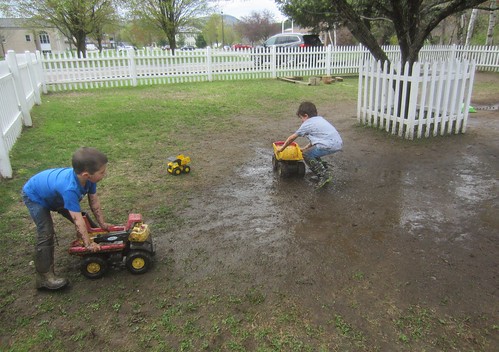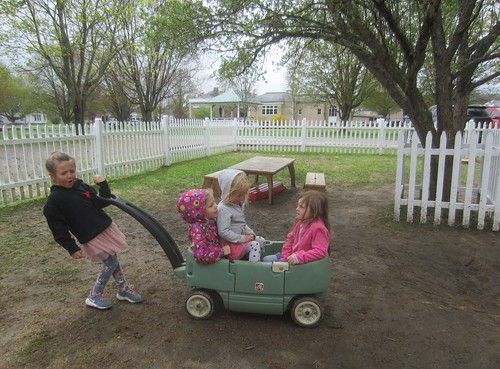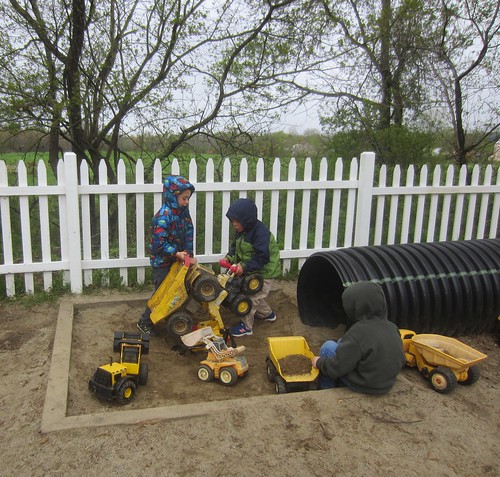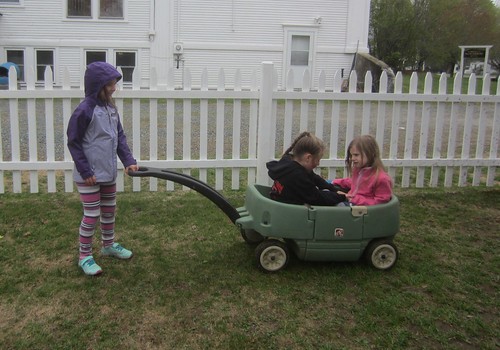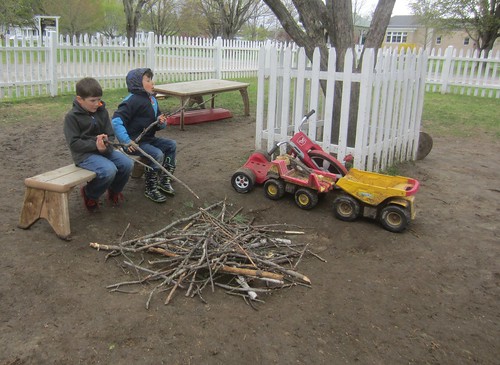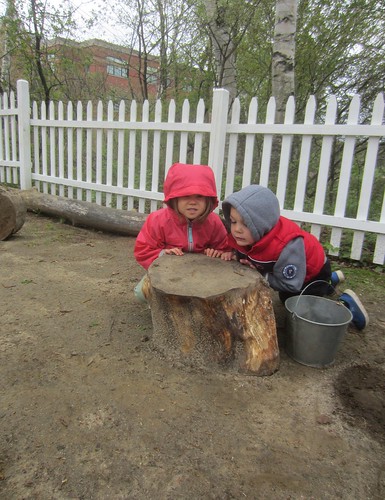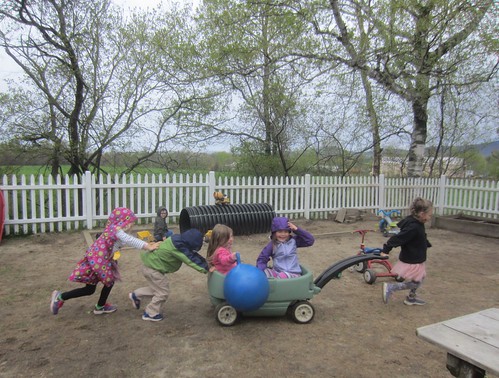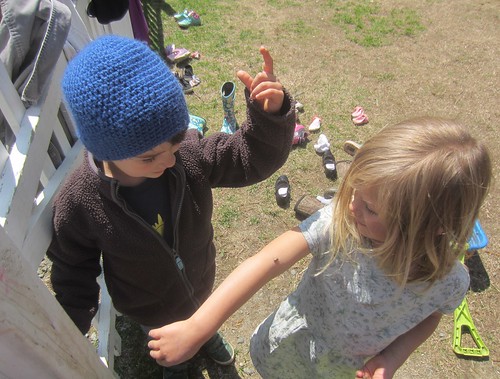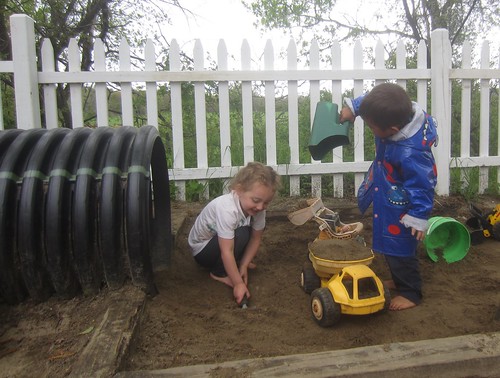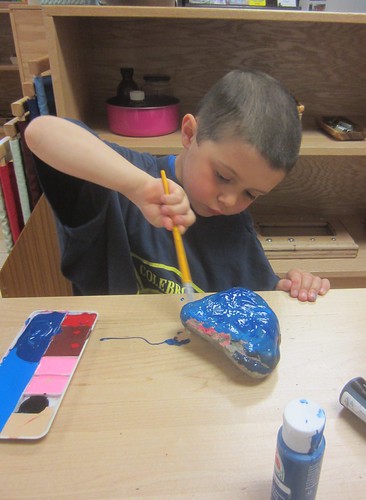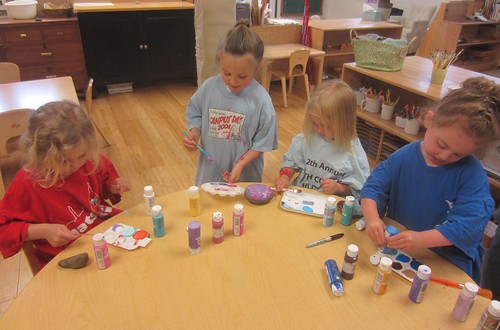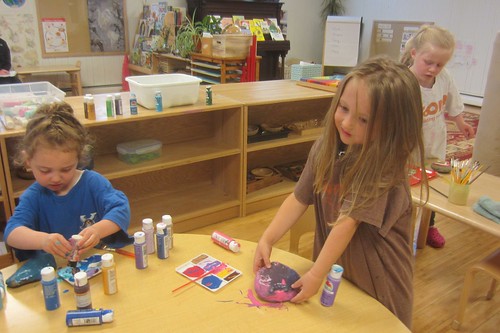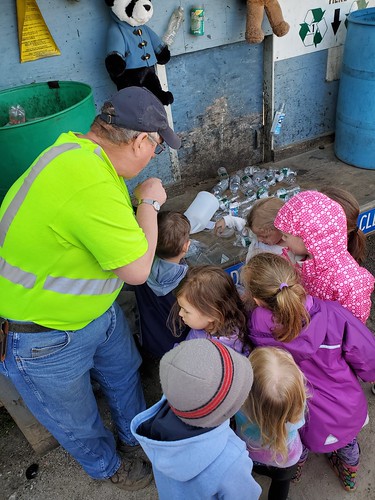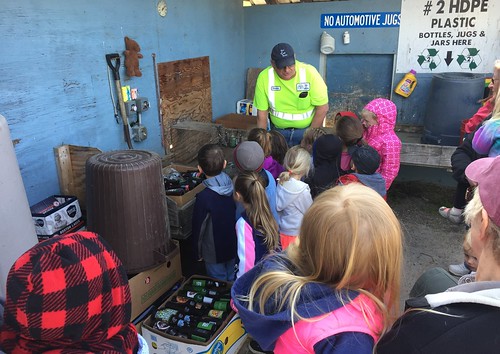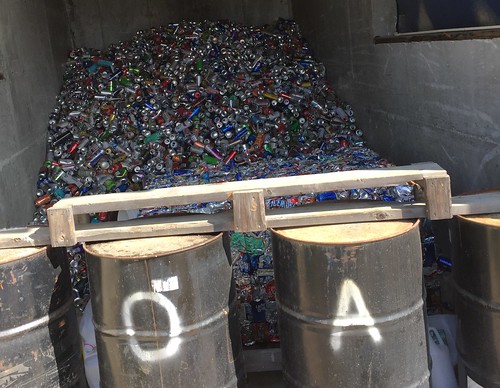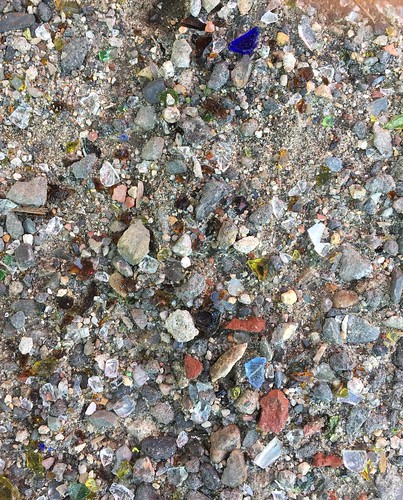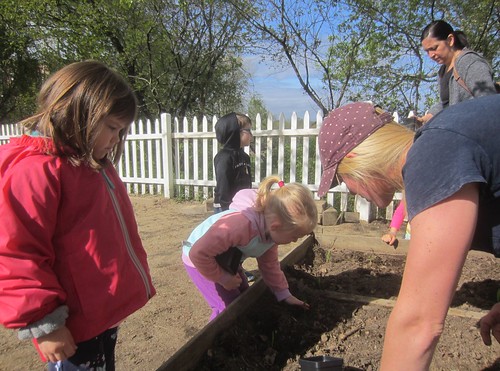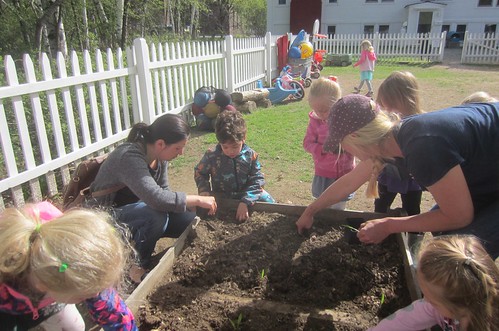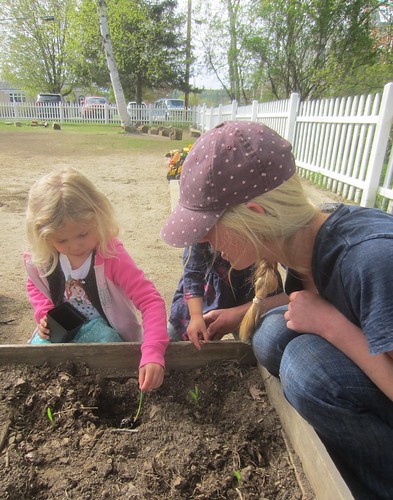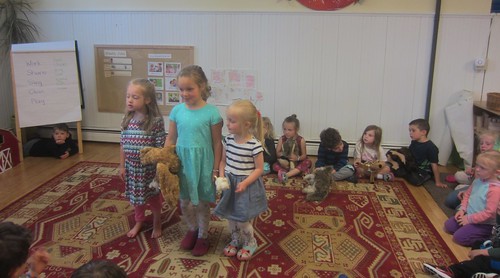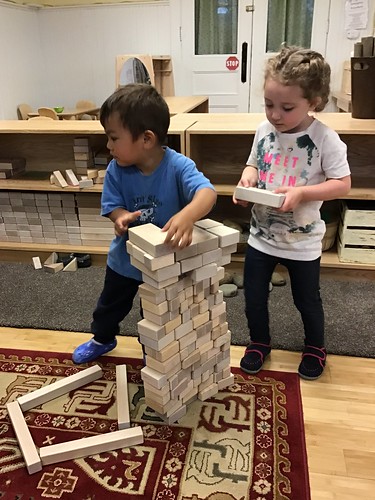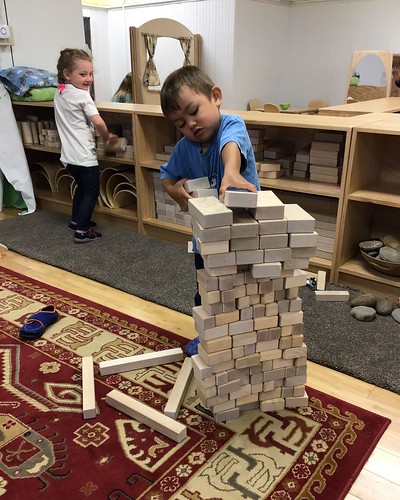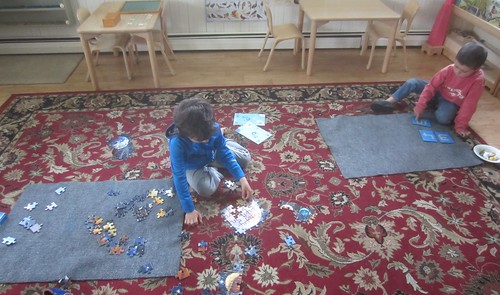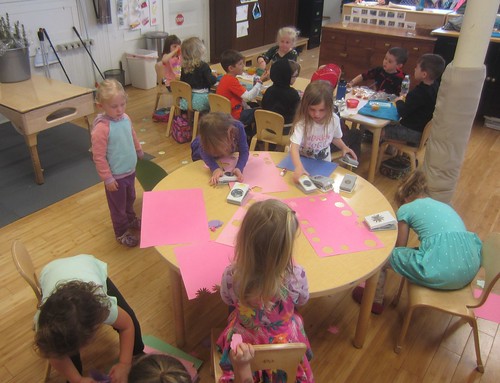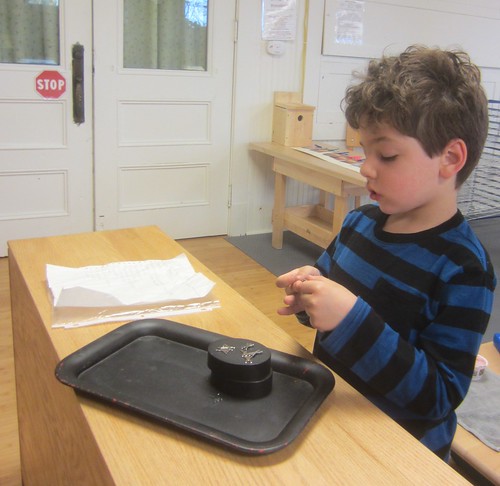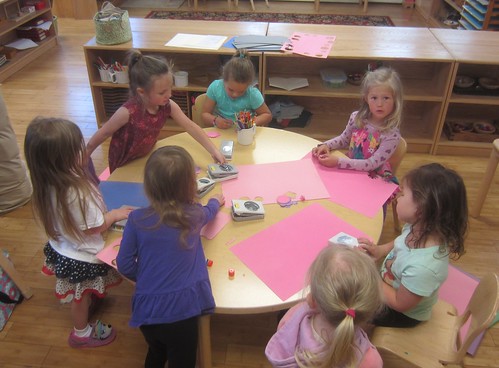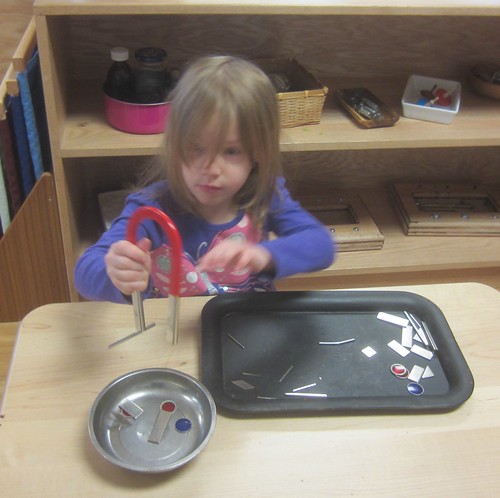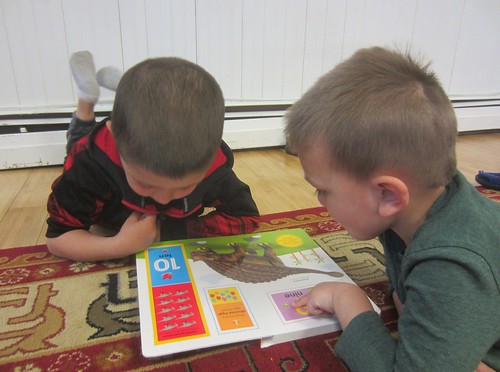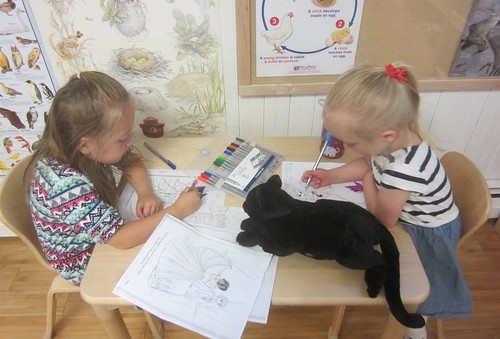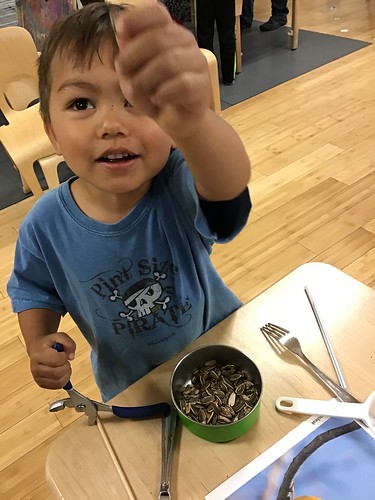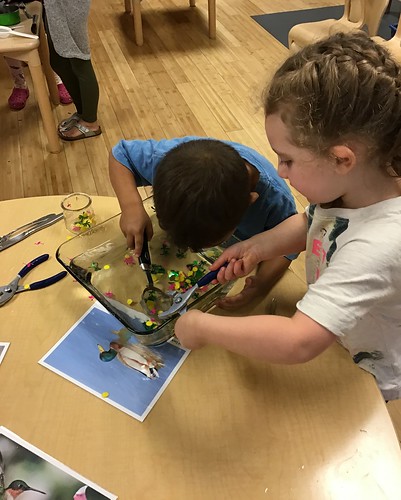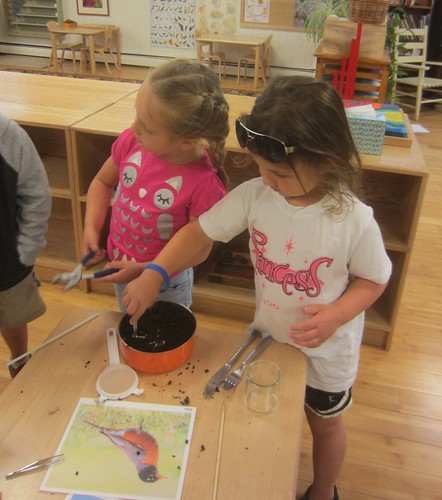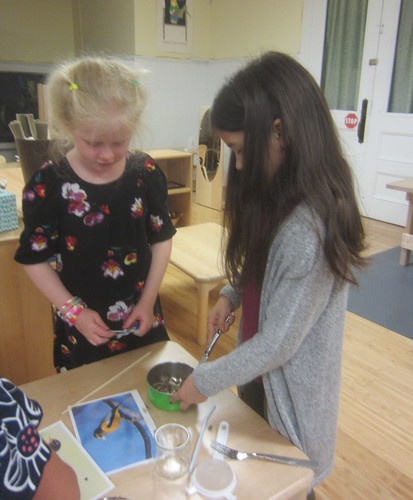With a few new toys from the yard sale donations, including some trucks, bikes, and a wagon, the children have been racing and zooming and pulling around the yard.
Monday students read some books about rocks, including Petra, about a rock that pretends to be different things until it is picked up by a child and decorated to look like an elephant. The children each selected a rock that was just the right shape and size for their needs, located the colors they loved best, and proceeded to paint their own rocks.
Most everyone was excited for our final visit from Believe in Books with Katie, A.O., and their friend Curious George. A.O. read a story about George visiting a chocolate factory, which was as entertaining as usual. Everyone then greeted Curious George with a hug, high five, wave, or fist bump, then chose a book from a wide selection to take home for their very own. Thank you to Believe in Books for all their wonderful visits and gifts of books this year!
Wednesday was the big field trip of the year. After 15 weeks of collecting recyclables and tracking our trash and paper towel waste, it was finally time to take it to the transfer station to drop off and have a tour. We had lots of families join us for our very informative visit with the Transfer Station director Dennis Patnoe! Dennis first took us to the metal, plastic, and glass recycling area. The children had a great time sorting and throwing all the recyclables into the correct locations. We got to see the glass put into the chute and hear the glass grinder chopping up the glass into small pieces. We learned that all the #5 plastics are taken to a plant in Northumberland where they are turned into fuel, and Dennis said that anyone, even non-Lancaster residents, are welcome to bring their #5 plastics to the Lancaster transfer station (good news for us VT residents)! After sorting our recyclables, we checked out the big pit where trash is thrown, which was very large and deep. We then saw where metals are left and items that are left for others who may be interested in reusing them, such as doors, shelves, chairs, etc. Next we went out back behind the recycling sort to see where all those recyclables go. We saw a large cube of crushed aluminum, and big piles of tin and plastics. We also saw a big stack of plastic and steel barrels, which Dennis said anyone is welcome to take for free. He pointed out the solar panels, the large hill of crushed glass, which is used under culverts and sidewalks because it does not freeze (and is also free to anyone in the public who may have need of crushed glass), and the giant pile of brush that will be burned. We checked out a spot where crushed glass was used to fill in a large hole, then proceeded to the recycling storage areas. We saw boxes of TVs waiting to be picked up and recycled and where clothes can be dropped off to be recycled/reused. We then got to see the cardboard crusher in action and saw a 2500lb cube of crushed corrugated cardboard, which will be sold for recycling. We also saw the crushers for low grade paper and newspaper. We learned that newspaper will be recycled into mdf board, and low grade paper is turned into paper towel tubes, etc. The office paper is collected and sold for recycling into new paper. Dennis sent coloring books and water cycle posters home for everyone. It was such an informative visit! When we returned to school we made Thank You cards for Dennis, which we will send off next week.
On Thursday morning for health with Zeanny, we joined Bridget outside to do some planting in our garden. Wednesday morning Bridget had topped off our garden bed with nice rich compost from her farm. She brought corn seedlings and pole bean seeds to plant together. Working in groups of 5, the children each planted a corn seedling and a bean seed next to each other. Bridget explained that the pole beans would wrap up and around the corn stalks, and in the fall we should have some nice fresh corn to eat. Zeanny will be sending home a letter for families to sign up to spend a week tending to the garden over the summer for anyone interested.
The children have continued to practice their plays for the last day performance, and The Little Red Hen crew did a run through for the group on Thursday. We were all appropriately impressed!
Friday students continued their study of birds. We read and talked about bird beaks and how different birds have different beaks that are just right for the type of food they eat. Hummingbirds birds have long suctioning beaks for drinking nectar. Seed eating birds have short strong beaks for cracking open seeds. Great Blue Herons have beaks for spearing and grabbing fish. Raptors, such as osprey and eagles, have beaks that tear and rip flesh. Robins and other worm eating birds have pointy beaks for digging down and grabbing worms. And ducks and other water birds have broad, strainer like beaks for scooping up small plants and animals. We did an experiment where we used different tools that represented different beaks, and tested them out to see which beaks were best for eating different foods. They figured them all out pretty quickly, but had fun experimenting anyway!

